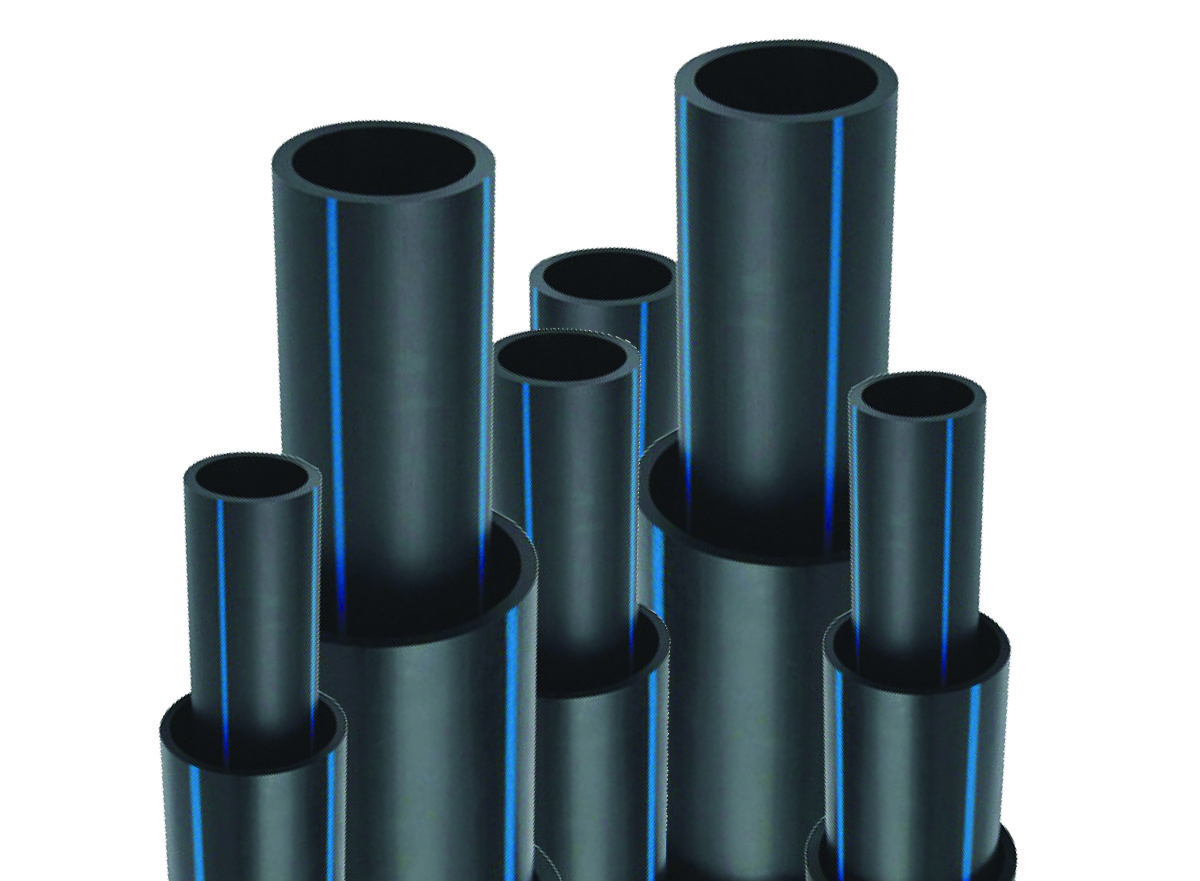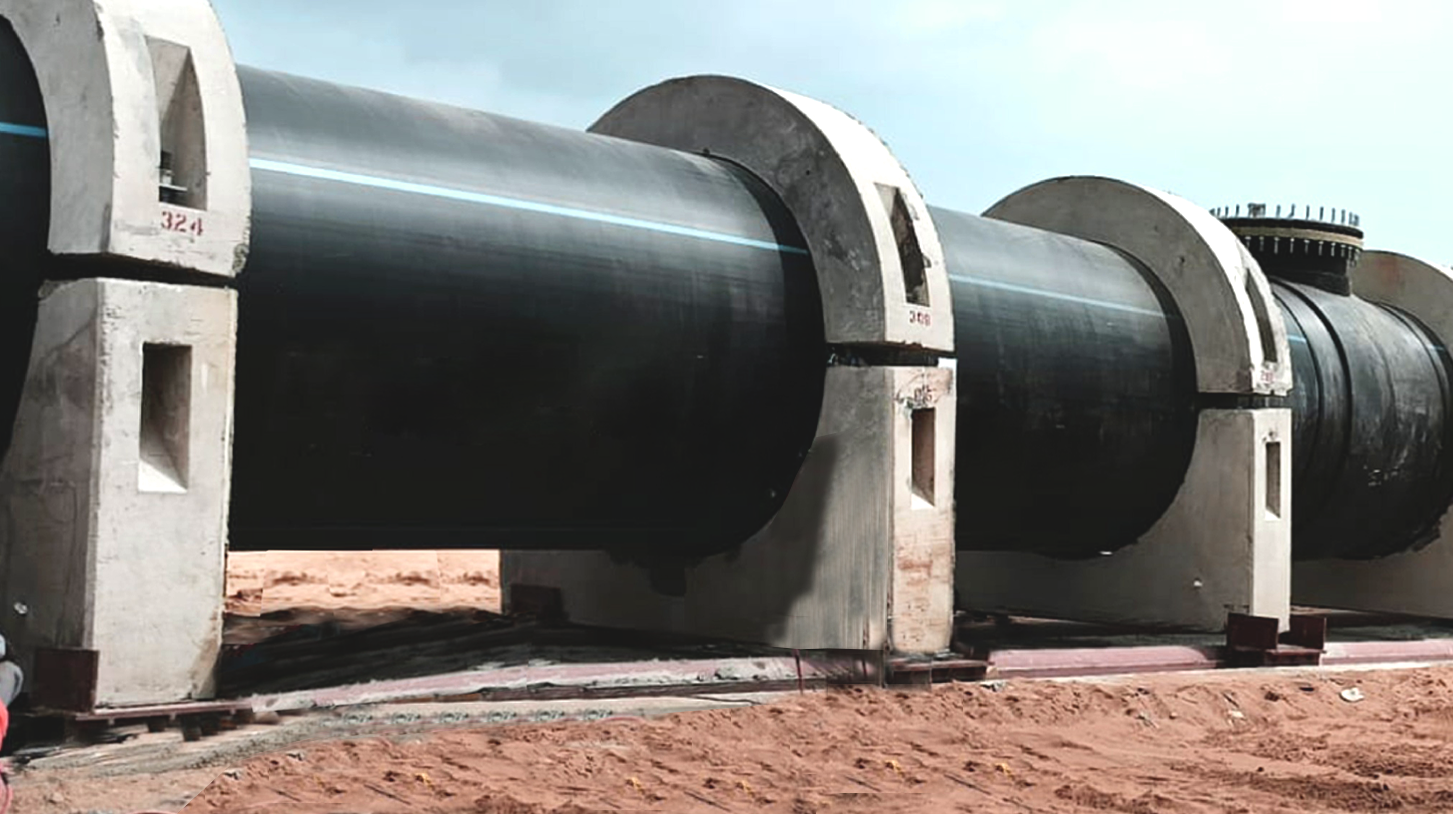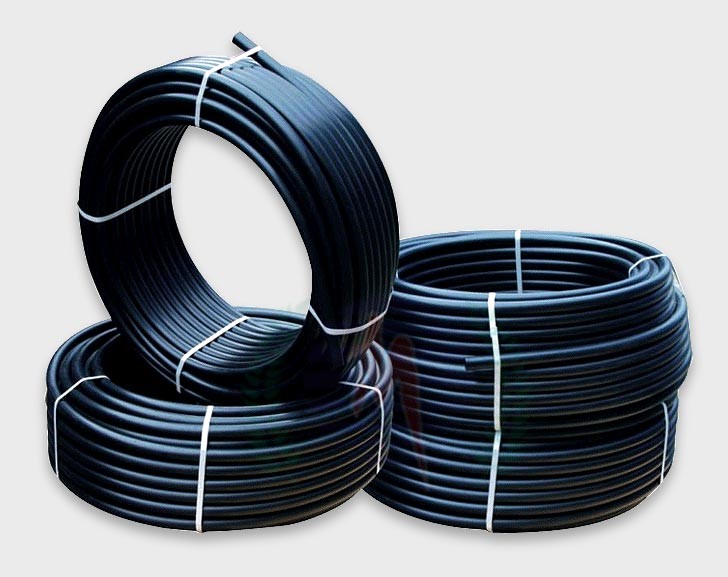The Reliability of Choosing Pipe Supplier American Plastics Midland
Wiki Article
Explore the Manufacturing Process Behind High-Quality HDPE Pipe and Its Applications
The manufacturing process of high-grade HDPE pipelines is elaborate and methodical. It begins with the choice of resources that enhance efficiency. Following this, ethylene undergoes polymerization to develop material, which is after that shaped through extrusion. Quality control is critical, making certain that the end product meets strict requirements. The journey of HDPE pipelines does not end with production. Their applications throughout numerous markets reveal a wider value worth examining.Comprehending HDPE: Qualities and Advantages

High-density polyethylene (HDPE) is a flexible thermoplastic understood for its durability and resistance to numerous environmental factors. This product shows exceptional tensile toughness, making it ideal for requiring applications. Its low-density structure adds to a light-weight item, assisting in ease of taking care of and setup. HDPE likewise showcases amazing resistance to chemicals, which lessens deterioration when subjected to severe compounds.
The material's reduced wetness absorption even more boosts its long life, making it perfect for use in pipelines and storage space tanks. Additionally, HDPE is immune to ultraviolet (UV) radiation, making sure that products preserve their honesty even when subjected to sunlight. Its versatility allows for the development of elaborate shapes without endangering stamina. The environmentally friendly nature of HDPE, often originated from recycled materials, includes in its appeal, advertising lasting practices in production. Overall, these homes and benefits make HDPE a favored choice for numerous commercial and consumer applications.
Resources Choice for HDPE Production
The choice of basic materials for HDPE manufacturing is necessary to verify the end product meets the desired specs and top quality standards. High-density polyethylene (HDPE) is mostly produced from polymerized ethylene, stemmed from fossil fuels such as gas or petroleum. The quality of these feedstocks substantially affects the mechanical and thermal buildings of the final HDPE.Additives additionally play a considerable function in boosting HDPE's efficiency, consisting of anti-oxidants, UV stabilizers, and colorants, which boost resilience and resistance to environmental variables. The option process must think about not only the chemical make-up of the raw materials but likewise their processing characteristics to ensure efficient manufacturing.
The sourcing of raw materials should focus on sustainability and compliance with environmental policies, as responsible techniques are imperative in today's market. Ultimately, mindful resources option lays the structure for creating premium HDPE pipelines ideal for varied applications.
The Extrusion Process: Forming HDPE Pipe
The extrusion procedure plays a crucial function fit HDPE pipes, beginning with careful product prep work strategies that assure optimal circulation and consistency. Equally essential is the layout of the die, which straight influences the last measurements and surface quality of the pipe. With each other, these factors add substantially to the effectiveness and top quality of HDPE pipe production.Product Prep Work Techniques
Efficient production of HDPE pipes begins with meticulous material prep work techniques, specifically the extrusion procedure. Throughout this phase, high-density polyethylene resin is first dried to get rid of dampness, making sure perfect flow qualities. The resin is then fed into the extruder, where it undergoes home heating and melting, transforming into a viscous state. This heating process is meticulously controlled to maintain the material's integrity and efficiency. The liquified HDPE is required through a die, shaping it right into a constant pipeline kind. Proper temperature level management throughout extrusion is vital, as it straight impacts the product's buildings and the end product high quality. When shaped, the HDPE pipe is cooled down and reduced to defined lengths, all set for succeeding processing and applications.Die Layout Importance
Precision in die style plays an essential role in the extrusion procedure of HDPE pipelines. The die works as the final shaping device, directly influencing the pipeline's measurements, wall density, and surface area finish. A properly designed die guarantees consistent material circulation, reducing flaws such as abnormalities and weak points. The geometry of the die have to be optimized to accommodate the particular properties of HDPE, including its viscosity and thermal behavior during extrusion. Additionally, the cooling price of the product as it goes through the die can markedly impact the pipeline's structural stability. Investing in advanced die technology is essential for suppliers aiming to create premium HDPE pipelines that meet market criteria and consumer assumptions.Top Quality Control Steps in HDPE Production
Different elements affect the high quality of HDPE pipe production, efficient top quality control measures are essential to guarantee consistency and reliability in the final product (custom hdpe pipe manufacturing Midland TX). Secret quality assurance techniques include strenuous product examination, verifying that the raw polyethylene fulfills established standards for pureness and thickness. During the extrusion procedure, criteria such as temperature level, stress, and cooling time are carefully kept track of to keep dimensional precision and architectural stabilityFurthermore, post-production screening is important; manufacturers frequently carry out hydrostatic tests to assess the pipeline's stamina and resistance to pressure. Visual evaluations for surface problems better enhance top quality guarantee. Accreditation from pertinent requirements companies, like ASTM or ISO, provides an added layer of reliability. By carrying out these comprehensive quality assurance steps, producers can decrease flaws, boost efficiency, and make certain that the HDPE pipes fulfill the specific requirements of numerous applications, ultimately leading to customer complete satisfaction and trust you could try here in the product.
Applications of HDPE Pipe Throughout Industries
HDPE pipelines are utilized across various sectors due to their durability and convenience. In water circulation systems, they assure efficient delivery, while in wastewater management, they provide dependable services for waste transport. Additionally, farming watering networks gain from HDPE's resistance to rust and versatility, making it an ideal choice for contemporary farming techniques.
Water Distribution Equipments
A significant number of markets rely upon high-density polyethylene (HDPE) pipelines for efficient water circulation systems. Recognized for their resilience and resistance to deterioration, HDPE pipelines are widely made use of in metropolitan water networks, farming watering, and commercial applications. Their lightweight nature helps with simple handling and setup, decreasing labor expenses and time. Furthermore, HDPE pipelines can fit various stress levels, making them appropriate for both reduced and high-pressure systems. custom hdpe pipe manufacturing Midland TX. The versatility of the material enables for smooth assimilation right into existing facilities, reducing the demand for considerable excavation. Moreover, HDPE's resistance to chemical leaching warranties that the water provided continues to be safe and tidy, making it a suitable selection for maintaining the high quality of potable water across numerous sectorsWastewater Administration Solutions
Effective water circulation systems also lead the way for ingenious wastewater monitoring options, where high-density polyethylene (HDPE) pipelines play a considerable duty. Prominent for their longevity and resistance to rust, HDPE pipelines are optimal for delivering wastewater in numerous setups. Their flexibility enables very easy installment in intricate environments, reducing the demand for extensive excavation. Additionally, HDPE's smooth indoor surface area decreases rubbing, boosting flow prices and performance. These pipes are also immune to chemical leaching, making sure that contaminants do not jeopardize the surrounding environment. Industries, communities, and therapy facilities increasingly depend on HDPE pipes for their dependability and durability, making them a recommended option for modern wastewater administration systems. This versatility underscores the critical value of HDPE pipes across numerous applications.Agricultural Irrigation Networks
Agricultural watering networks profit greatly from the use of high-density polyethylene (HDPE) pipes, which offer reliable and trustworthy water delivery to crops. HDPE pipes are lightweight, making them very easy to transfer and mount, while their versatility enables for different arrangements in varied surfaces. These pipelines demonstrate superb resistance to corrosion, chemicals, and UV radiation, ensuring durability in severe agricultural settings. In addition, their smooth interior surface area reduces rubbing loss, enhancing water flow and minimizing power prices related to pumping. The durability of HDPE pipes, often surpassing half a century, adds to decrease maintenance and replacement expenses. Farmers increasingly depend on HDPE pipes to enhance watering performance and promote sustainable agricultural techniques, ultimately leading to improved plant yields and resource preservation.
Future Patterns in HDPE Pipeline Modern Technology
As the need for lasting and efficient framework grows, advancements in HDPE pipeline modern technology are poised to change numerous industries. Emerging trends include the combination of clever innovations, such as sensing units and IoT abilities, which facilitate real-time surveillance of pipeline problems, reducing maintenance prices and protecting against leaks. In addition, the advancement of innovative production methods, such as 3D printing, is making it possible for the manufacturing of complex, tailored pipeline layouts that satisfy certain job requirements.The emphasis on recycling and round economic climate methods is driving the advancement of HDPE pipes made from recycled materials, enhancing sustainability. Improved jointing approaches, such as electro-fusion and mechanical installations, are also enhancing setup efficiency and dependability. The growing emphasis on ecological guidelines is pressing manufacturers to adopt greener manufacturing processes, making sure that HDPE pipelines not only meet industry standards but additionally promote an even more sustainable future for framework growth.
Often Asked Questions
Just How Does HDPE Compare to Various Other Plastic Products?
HDPE exceeds lots of various other plastic products regarding resilience, chemical resistance, and adaptability. Its low density and high tensile strength make it suitable for various applications, typically surpassing alternatives in both efficiency and durability.What Are the Ecological Impacts of HDPE Production?
The ecological impacts of HDPE production consist of greenhouse gas Click This Link discharges, power intake, and possible contamination from manufacturing processes. In addition, inappropriate disposal can result in soil and water contamination, raising problems concerning long-lasting ecological results.Can HDPE Water Lines Be Reused?
Yes, HDPE pipelines can be reused. Several centers accept made use of HDPE for handling, changing it right into brand-new items. This reusing contributes to sustainability efforts, minimizing plastic waste while preserving resources and energy in the production cycle.What Is the Life Expectancy of HDPE Piping?

Exactly How Do Temperature Level Variations Affect HDPE Pipeline Performance?
Temperature level variations significantly influence HDPE pipeline efficiency, affecting adaptability and strength. High temperatures can lead to softening, while low temperatures might cause brittleness, eventually affecting the pipe's durability and suitability for numerous applications in diverse settings.Report this wiki page